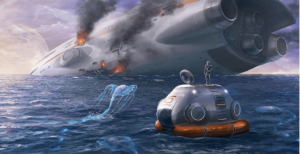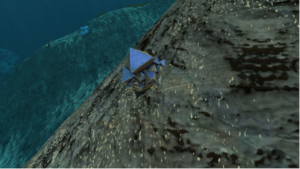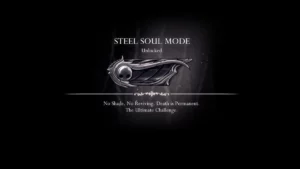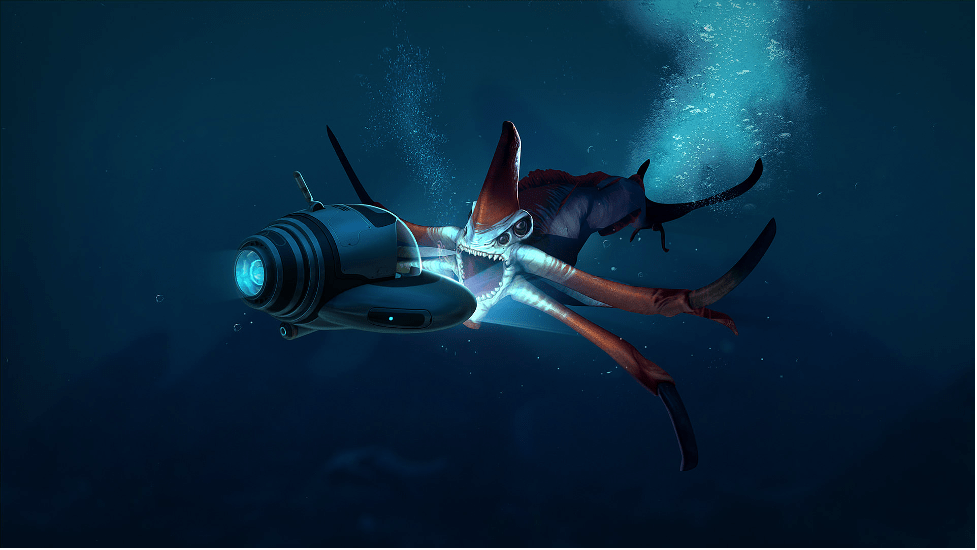
- Last Updated on
The vast underwater seascape of Subnautica is a sight to behold. The hand-crafted biomes and breadcrumb story mesh together to create what I’d argue is one of the best survival gaming experiences out there. Each biome is a world unto itself, stoking the flame of adventure in every player who first ventures within. However, though these elements are outstanding, Subnautica truly shines because of its infamous Leviathans.
These Leviathans turn what would have been essentially a survival version of Abzu into an underwater horror game. The surprise of encountering these beasts for the first time sticks with you, leaving you peering into the deep with dread. To make your exploration of Subnautica’s beautiful seascape a bit easier, I’ll guide you through these deepsea giants’ stomping grounds. Whether you use this information to avoid the Leviathans, or charge them head-on, is entirely up to you.
💥 Don't Miss These Latest Deals 💥

- 27 inch QHD (2560*1440) display with the DCI-P3 90% wide color gamut brings what you’re watching to life in over 16.7M colors

- Nvidia ampere streaming multiprocessors
- 2nd generation rt cores:
- 3rd generation tensor cores
Reefback
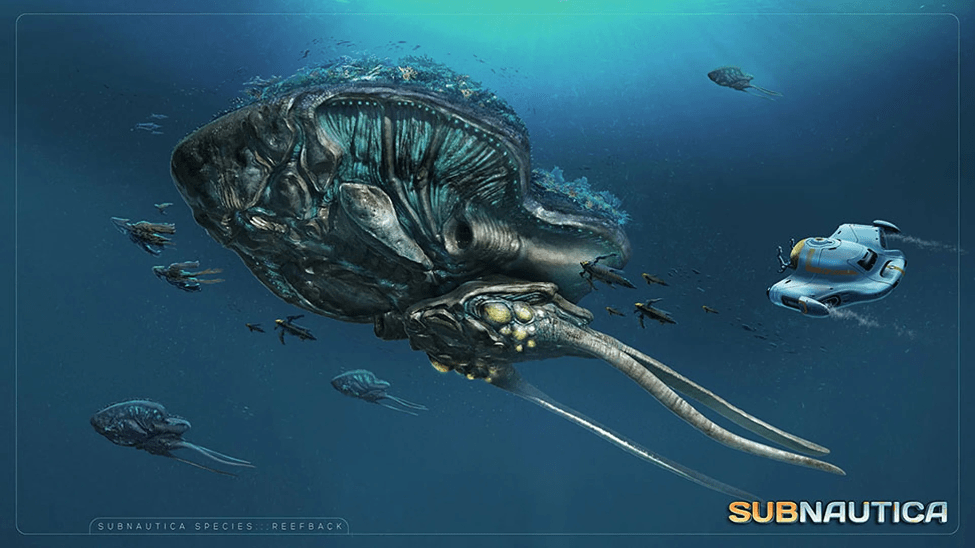
I’ll start with something gentle – the Reefback. These guys are likely the first leviathans you will encounter, being commonly found swimming in the Grassy Plateaus. Reefbacks are pretty harmless themselves, though their calls might take a bit to get used to. Any danger they might pose can be found on their backs, which can sometimes play host to Tiger Plants. These plants will shoot barbs at you, unless you are wearing the Reinforced Dive Suit. Even still, it’s worth checking out the Reefbacks in the early game, as their barnacles might have a few materials to share with you.
Where To Find Kyanite | Best Places To Find Lithium | How To Craft Aerogel | How To Build The Seamoth | Subnautica Aurora Codes | How To Build The Prawn Suit
Sea Treader
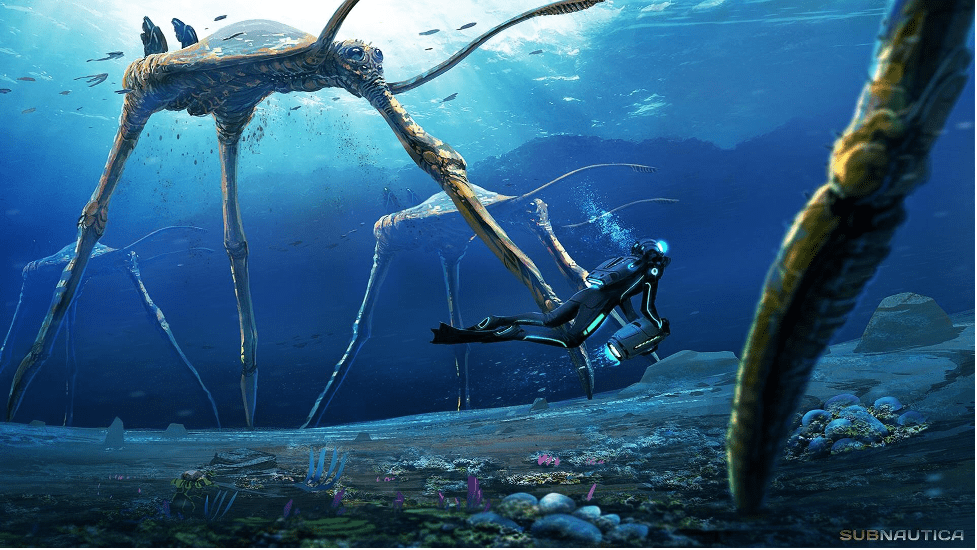
The Sea Treader is the second non-threatening Leviathan in Subnautica. These nomadic crustaceans wander along a particular area known as the Sea Treader’s Path. They can be found in the Western area of the map, just above the Grand Reef and very close to the Void. While it can certainly be dangerous to get there, it’s worth visiting the Sea Treaders from time to time.
Sea Treaders move in herds, kicking up Shale Outcrops as they go. This essentially makes them an infinite source of Gold, Lithium, and Diamond, all of which are critical resources for mid-to-lategame crafts. Don’t get too close to their legs, though – that’s a great way to get yourself accidentally killed.
Also Read: Where To Find Diamonds In Subnautica Below Zero
Reaper

With the passive Leviathans out of the way, it’s on to the main attractions. The Reaper needs no introduction, likely being the first aggressive Leviathan you will encounter. These sea scourges lurk all over the Crater, being present in a good portion of Subnautica’s biomes. The first Reapers you’re likely to see, or more accurately hear, are the ones patrolling the murky waters near the Aurora. One lurks near the ship’s stern and one near the bow, and you’ll probably be well-acquainted with both before long. Just remember, if you can hear them, they can see you.
In addition to the ones near the Aurora, there are a total of 25 Reapers in Subnautica. Reapers are most densely populated in the Aurora’s Crash Zone, the Dunes, and the Mountains, though there are also a couple in the Bulb Zone. Reapers can also drift in and out of biomes if given a reason to, such as spotting a nearby diver. Relocated Reapers should return home soon after abandoning a chase, however.
Reapers can be a terrifying sight and sound to behold, and they’ve got a severe bite to back up that bark. Without any upgraded defenses, Reapers can deal 80 damage to the player, with an insta-kill animation if you are at 80 health or below. They can also seriously damage the Seamoth, with each bite taking off roughly 50% of its durability. A Prawn Suit and Cyclops are able to take a lot more punishment, but you’ll still want to deal with the threat quickly. Sustained attacks from the Reaper will destroy both of these vehicles, so you’ll need to quickly decide whether to fight or flee.
Ghost Leviathan Juvenile
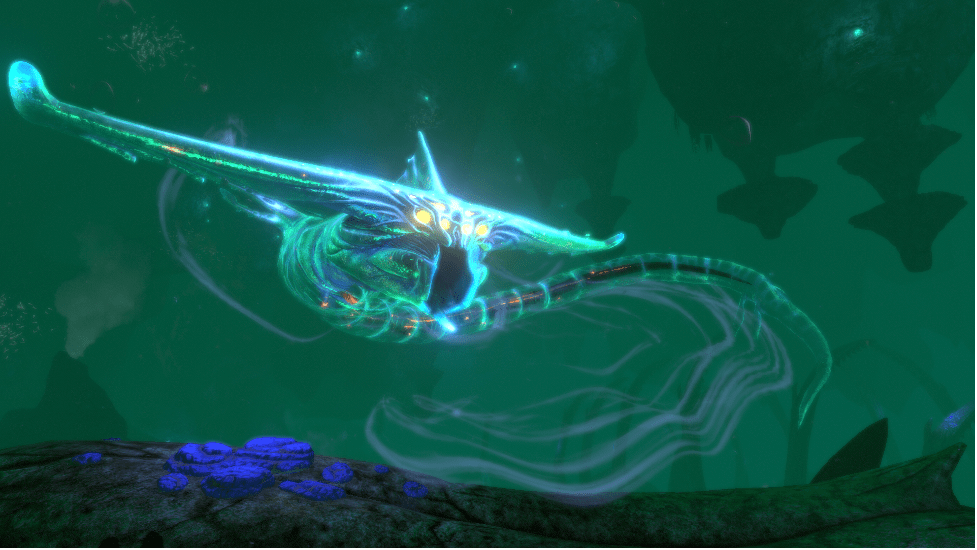
The next aggressive Leviathan you’re likely to encounter is the juvenile Ghost Leviathan, assuming you aren’t unlucky. These guys live in the Lost River, which can be accessed from several different entry points. Despite their datapad entry, Ghost Leviathan juveniles don’t seem to be as aggressive as the Reapers, and will largely leave you alone as you traverse the Lost River. They’ll still do a fair bit of damage to the unprotected player, so underestimate them at your own risk. The adults, however, are far more threatening.
Adult Ghost Leviathan
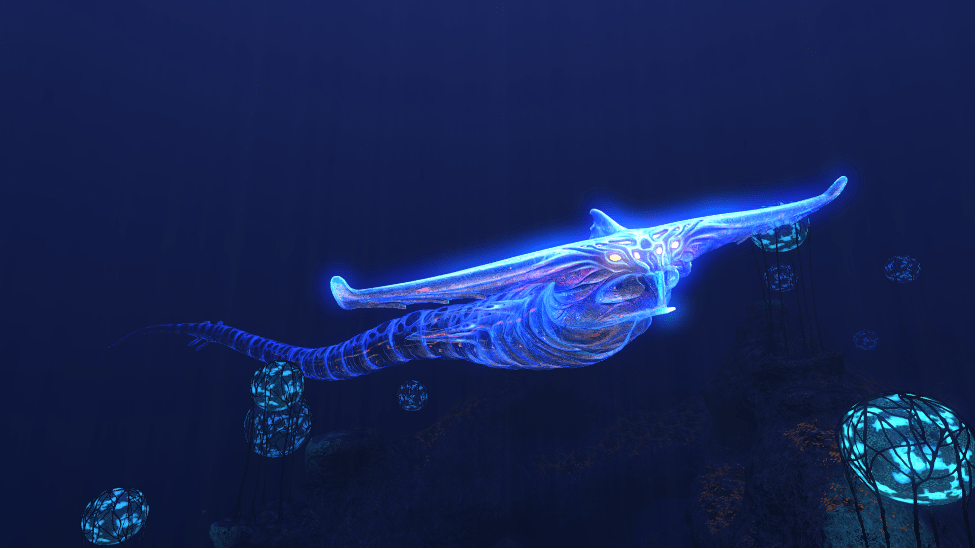
If the juveniles gave you the impression that Ghost Leviathans were pushovers, you’re about to have a rude awakening. You’ll encounter the adult Ghost Leviathans soon enough, and these deepsea specters are a force of nature indeed. Ghost Leviathans are almost twice the size of Reapers, deal 84 damage per hit, and are hyper-aggressive. Even worse, they are much, much quieter than the Reapers, so you’re liable to receive a very nasty surprise visit if one spots you from a distance.
Adult Ghost Leviathans, thankfully, are quite few in number. They can be found in two biomes within the Crater, with two in the Grand Reef and one in the Northwest Blood Kelp Zone. Like the Reapers, Ghosts can be relocated if they chase you into a different biome, though they should make their way home eventually.
Ghost Leviathans can also be encountered in another place, but it’s one you shouldn’t be venturing into anyway. This location is the Void, or the World’s Edge if you prefer. This is the “out-of-bounds” area, which marks the end of the playable map. Once you venture inside, your PDA will comment on an “ecological deadzone”, and an adult Ghost Leviathan will spawn nearby. This is your cue to leave. A second Ghost will spawn in another thirty seconds, and a third thirty seconds after that. These Ghosts will stick around until you’re dead, or you retreat back to the relative safety of the Crater. Enter the Void at your own risk.
Sea Dragon
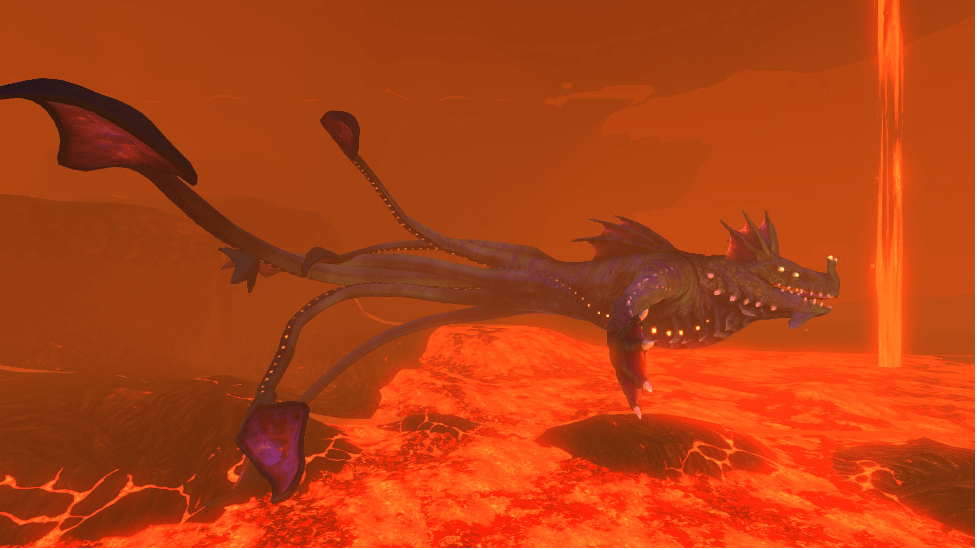
These fiery reptilians are the true apex predators of Subnautica, preying on even the dreaded Reapers that were seemingly so threatening at the start of the game. They can be found in Subnautica’s two end biomes, the Inactive Lava Zone and the Lava Lakes. These locations must be braved in order to uncover the secrets of Planet 4546B, Kharaa, and reach the end of Subnautica’s storyline. You’ll find a total of three in the game, with two in the Inactive Lava Zone and two in the Lava Lakes. You’d best hope they don’t find you.
If you’re spotted by a Sea Dragon, you’ll have to brace for three attacks. The first, and most likely, is a fireball. Sea Dragons will launch an arc of fireballs if attacking you from range, which is a likely first strike. Individual fireballs aren’t terribly threatening, but being hit by a few in quick succession will do noteworthy damage. The second attack is a fin swat, which happens when you’re in range of the Sea Dragon’s fins. This attack isn’t terribly threatening, dealing only 40 damage to you and minor damage to vehicles.
Lastly is the bite, which happens if you are staring down the Sea Dragon. This isn’t recommended, as doing so will result in your immediate death. Instead, if you are unfortunate enough to catch a Sea Dragon’s attention, you should attempt to shake it fast. Deploying a creature decoy and activating Silent Running is good in the Cyclops, while grappling away with jet bursts is good with the Prawn Suit. Sea Dragons don’t tend to pursue for long, so once you leave eyeshot, you’ll probably be fine.
Sea Emperor
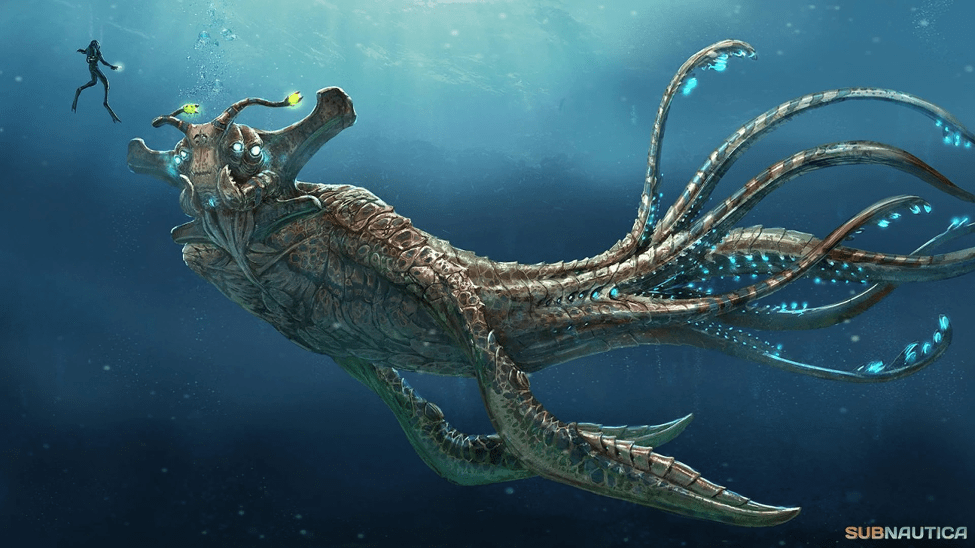
The final Leviathan you’ll see in Subnautica is the Sea Emperor. Fair warning, information about this Leviathan is very spoiler heavy, and it is unmissable, assuming you follow Subnautica’s storyline.
Once you reach the end of the Lava Lakes, you’ll find the Primary Containment Facility, housing the last of the Sea Emperors and its eggs. This regal but gentle giant will be the first creature to directly assist you, helping you achieve certain goals and reach the end of the game, in exchange for helping to hatch its young. Once you’ve done so, stick around and give those hatchlings a scan, you’ll learn a bit more about the Sea Emperors, and it’s your last safe opportunity to do so.
At this point, you’ll have seen pretty much everything Subnautica has to offer, including every Leviathan. There might be a couple of lore-related PDAs you’ve missed, so feel free to stick around and search for them. Other than that, you have one final step to clear before finishing Subnautica. I hope you enjoyed it as much as I did.
Frequently Asked Questions
How Many Types Of Leviathans Are In Subnautica?
The various Leviathans that you’ll find lurking in the depths of 4546B, the planet you have been stranded on in Subnautica, come in a variety of forms, each one almost always being more dangerous and terrifying than the last.
Leviathans are separated into 14 distinct Leviathan class organisms that you will encounter:
- Vent Gardens
- Ghost Leviathans
- Reaper Leviathans
- Chelicerate
- Void Chelicerate
- Frozen Leviathan
- Reefback Leviathan
- Ice Worm
- Glow Whale
- Ice Whale
- Sea Dragon
- Shadow Leviathan
- Squidshark
- Sea Emperor
These leviathans that you’ll meet along the way to being rescued from 4546B include everything from the passive, peaceful leviathans such as the Reefback Leviathans and Ice Whales, to the terrifying and aggressive species that the game is notorious for, such as the Reaper and Ghost Leviathans, and especially huge species like the Sea Dragons.
This isn’t even counting the extinct species that used to live on this watery planet, either!
How Big Is The Frozen Leviathan?
Big. Very Big.
In more serious terms, the frozen Leviathan is probably one of the biggest species of the leviathan that exist on 4546B, the water world that Subnautica takes place on.
Just the body of the Frozen Leviathan would be enough to put it amongst the biggest life forms ever found in 4546B. At 70 meters long, just the body alone is the same size as a Reefback Leviathan, one of the largest passive animals in the game.
However, when including the tail of the beast, the Frozen leviathan becomes one of the biggest animals in the entire game. At 150 meters, it is the fourth-largest animal that existed on the planet, and the third-biggest extinct animal.
To put that into a little more perspective, the Frozen Leviathan is almost as big as 3 Reaper Leviathans, laying head to tail. Or, in real-world terms, longer than the Pyramids of Giza!
Is The Frozen Leviathan Alive?
The Frozen Leviathan has stuck with many Subnautica fans long after they put down their copy of Subnautica: Below Zero. This massive creature is even the focus of its quest, as you try and cure the body of the creature from the kharaa disease that was introduced in the previous game.
However, this has also led to many fans wonder exactly if the Frozen Leviathan is even dead at all, or if it is simply waiting to be thawed out and escape.
Well, the answer to that question is somewhat ambiguous. While a few characters in the game certainly seem to think that it is simply dormant, rather than outright dead, many other characters are not convinced, and a number of scans conducted through seem to suggest just that. Even the developers have weighed in, stating outright that it is dead.
Still, there’s just enough ambiguity to keep you guessing…
What’s The Biggest Leviathan In Subnautica?
With so many massive creatures to be found lurking in the depths of planet 4546B in Subnautica, there are probably more than a few players wondering what exactly the biggest Leviathan is in the game.
Well, the title of the biggest living organism that can be found in Subnautica has to go to the Sea Emperor class of Leviathan. At up to 200 meters in length, this colossal beast is also one of the rarest animals in the game, with them almost being driven to extinction to find a cure to the kharaa infection.
(Interestingly, their filter-feeding nature makes it the largest passive creature in the game, too.)
However, you may have spotted the fact that we only said ‘living’ Leviathan. There are even bigger extinct species of Leviathan that existed, with the biggest, the Gargantuan Fossil Leviathan, having remains that measured well over 1000 meters, capping out at 1500 overall!



